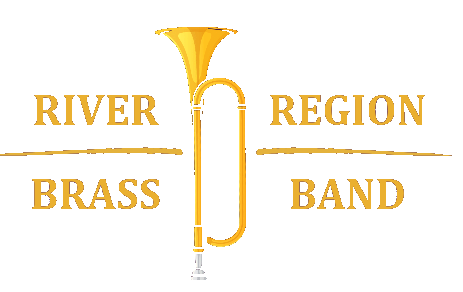A History of British Brass Bands
Gloucester Railway Carriage & Wagon Company Band, 1916. Collieries and factories often sponsored their own works bands, and many now-defunct companies survive only in the names of their former bands.
Most of the instruments used in British brass bands had been in use for some time in village, church and military bands, and in the 1840s and 1850s the brass band emerged from these as a popular pastime. Brass bands were a response to industrialization, which produced a large working class population, technological advances in instrument design, and the mass production to manufacture and distribute the instruments. A major improvement to the old designs was the development of efficient piston valves, which were easier to play and produced a more accurate, consistent sound. Arguably brass bands were an expression of the local solidarity and aspirations of newly formed or rapidly growing communities. This was seen, for instance, in the creation of brass band competitions by the late 1850s. In 1853 John Jennison, owner of Belle Vue Zoological Gardens in Manchester, agreed to stage the first British open brass band championships. The event was attended by a crowd of over 16,000 and continued annually until 1981. Brass bands probably reached their peak in the early twentieth century, when there were over 20,000 registered brass bands in the country. Today, there are still over 4000 registered brass bands in Britain with around 80,000 players.
British Brass Bands in The United States
Brass bands in the British tradition are becoming more popular through the efforts of the North American Brass Band Association, which organizes an annual brass band convention and set piece style contest. The US Open Brass Band Championships are held in early November and serves as the country’s leading entertainment competition. Brass Band Festivals such as The Great American Brass Festival, Ohio Brass Arts Festival, Dublin Festival of Brass and the Mid-Atlantic Brass Festival occur throughout the year.
Brass bands were very popular throughout the United States in the late 19th century and the early decades of the 20th century. Well known bands of virtuoso musicians toured widely, and most towns had their own bands that put on weekend music concerts. One notable example of this was The Ohio State University Marching Band which formed in 1879 and still performs with only brass and percussion instruments. Other groups, ranging from benevolent societies to large factories, would often have a band. The brass band movement has undergone a resurgence in the late twentieth century, led by the North American Brass Band Association. The United States boasts a number of professional brass bands, including the Brass Band of Battle Creek, the River City Brass Band, and the Orchid City Brass Band (West Palm Beach, FL); community brass bands such as the Central Ohio Brass Band, Dublin Silver Band, Motor City Brass Band, Atlantic Brass Band, Nebraska Brass Band, Imperial Brass, Brass of the Potomac, Chesapeake Silver Cornet Brass Band (Delaware), Five Lakes Silver Band, Allegheny Brass Band, The Brass Band of Central Florida, the Sheldon Theatre Brass Band (Red Wing, MN), the Lake Wobegon Brass Band (Anoka, MN), the Twin Cities Brass Band (Bloomington, MN), the Fountain City Brass Band, the Triangle Brass Band, the Smoky Mountain Brass Band the River Brass, and the Mission Peak Brass Band (Fremont, CA); several collegiate brass bands, including the James Madison University Brass Band, the Mansfield University Brass Band, the Slippery Rock University Brass Ensemble and the University of Georgia British Brass Band; and various youth brass bands, including the Triangle Youth Brass Band and the Fountain City Youth Brass Bands also exist.
